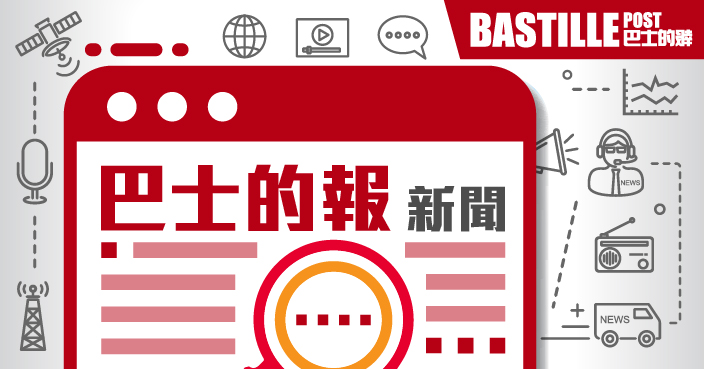On April 21, U.S. President Donald Trump posted three photos on his social media platform Truth Social, captioned “A Gift from China in the Pacific Ocean!” The images showed large amounts of trash floating in the ocean. However, media investigations revealed that these photos were old images circulating online for years, some not even from the Pacific Ocean, and one was digitally altered. The Chinese state media WeChat public account “Bull Piano” (Niu Tanqin) criticized Trump, saying he should issue a public, serious, and solemn apology for spreading falsehoods.
“Bull Piano” published an article on Monday (April 28) stating that Trump posted three pictures showing massive ocean garbage, claiming it was a “gift from China.” But the photos were either outdated or outright fake. The article pointed out the irony that Trump, who often condemns “fake news,” was actually fabricating stories to slander and demonize China.
Click to Gallery
Trump posted three pictures showing massive ocean garbage, claiming it was a “gift from China.”
The first photo was taken by nature photographer Ethan Daniels
The second photo was posted by underwater photographer Caroline Power on Facebook in 2017.
The third photo was found to be a composite image。
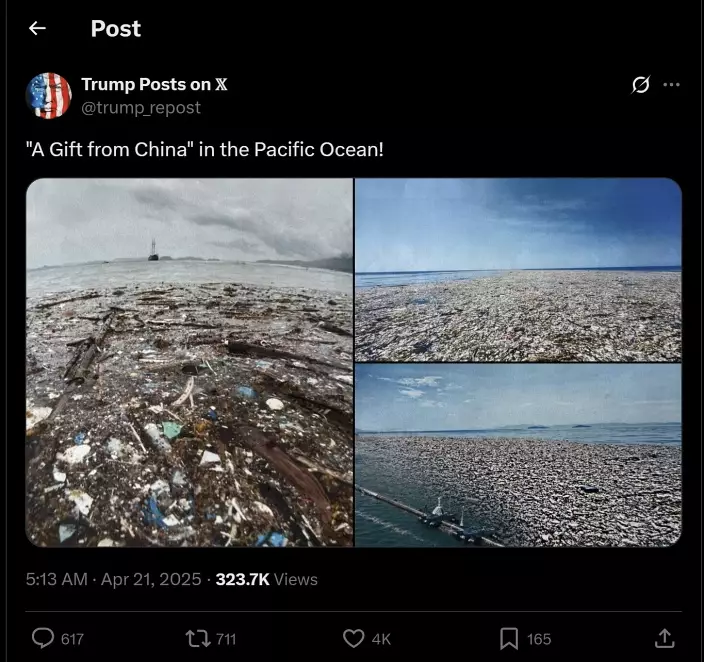
Trump posted three pictures showing massive ocean garbage, claiming it was a “gift from China.”
As the U.S. president, Trump’s posts attracted wide attention and many shares. The images of dense ocean trash were shocking, and Trump immediately blamed China without any proof. The article questioned how Trump could prove the trash originated from China, given the vast number of islands and countries in the Pacific. It argued that it was not easy for Chinese naval forces to bypass the so-called first and second island chains in the Pacific while this trash supposedly floated freely.
Mainland media soon exposed the lies with evidence, pointing out clear flaws in each photo:
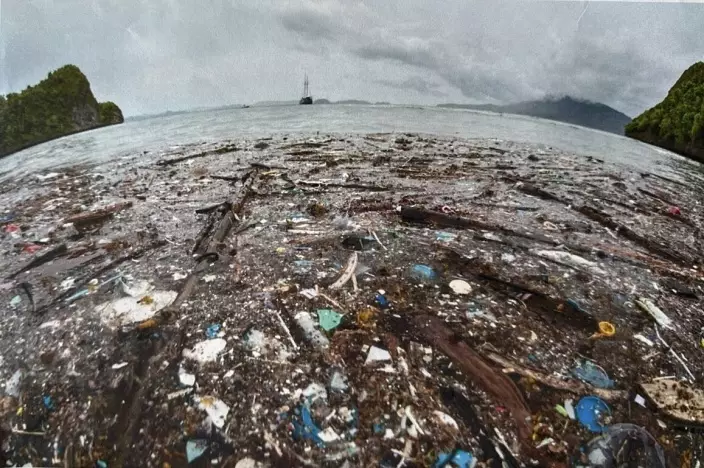
The first photo was taken by nature photographer Ethan Daniels
The first photo was taken by nature photographer Ethan Daniels in July 2017 near Raja Ampat of West Papua in Indonesia, further east and south of the Philippines, separated from China by many islands.
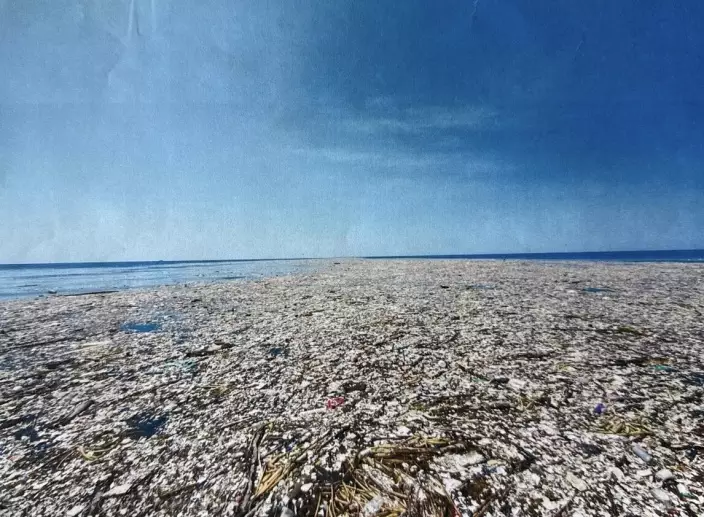
The second photo was posted by underwater photographer Caroline Power on Facebook in 2017.
The second photo, taken near Roatan Island in northern Honduras, was posted by underwater photographer Caroline Power on Facebook in 2017. At the time, media reported that the trash came from neighboring Guatemala, but this area is not in the Pacific but in the Atlantic Ocean, the Caribbean Sea, much closer to the U.S.

The third photo was found to be a composite image。
The third photo was found to be a composite image: the left side was an Associated Press photo of a floating barrier assembled in California to collect ocean trash; the right side was another trash photo by Caroline Power, which had been published by multiple media.
“Bull Piano” questioned where Trump found these images and criticized that he posted them without any fact-checking, causing a major embarrassment and making the world laugh at him. It said it was hard to imagine if Chinese officials did the same by using old or doctored photos to accuse the U.S., which would become a diplomatic incident. The article also questioned the competence of those preparing materials for Trump, suggesting they lacked basic journalistic literacy.
The article emphasized that deliberately spreading rumors to smear another country, especially by a leader, requires careful words and deeds. Since Trump is not an ordinary netizen, the consequences could be serious, possibly requiring not only an apology but administrative detention in some countries. Given the clear evidence, the U.S. should apologize, and if Trump is too embarrassed to do so, the White House spokesperson should issue a formal apology on his behalf.
The article also noted a recent phenomenon: U.S. officials keep hinting or openly stating that talks with China are ongoing daily and that tariff agreements are imminent. This forced China’s Foreign Ministry, Ministry of Commerce, and embassy in the U.S. repeatedly clarify that there is no contact, negotiations, nor agreements. The article concluded that Americans are anxious while the Chinese remain calm.
In a humorous twist at the end of the article, it quips, 'A friend suddenly had an epiphany: there’s a significant possibility that the American leader might have received a scam call from one of those notorious fraud hubs from Myanmar!'
Mao Paishou
** The blog article is the sole responsibility of the author and does not represent the position of our company. **
The New Year barely begins, and Washington drops a flashbang on global diplomacy. A sitting president is forcibly detained and taken out of his own country — a move that blows past diplomatic convention and rams straight into international law’s red lines. On Taiwan, the chatter instantly turns into self-projection, as some people try to shoehorn a faraway conflict into the island’s own storyline. Anxiety spreads fast.

Maduro in cuffs, in a US federal courtroom — the raid’s image problem. (AP)
The South China Morning Post says the US action against Venezuela ignites a fierce debate on the island. Some commentary links the raid to the PLA’s recent encirclement drills around Taiwan, arguing parts of those exercises look, at least in form, like the US’s so-called “decapitation operations”: essentially a leadership-targeting operation. Some American scholars also warn this kind of play could set a dangerous precedent and invite copycats.
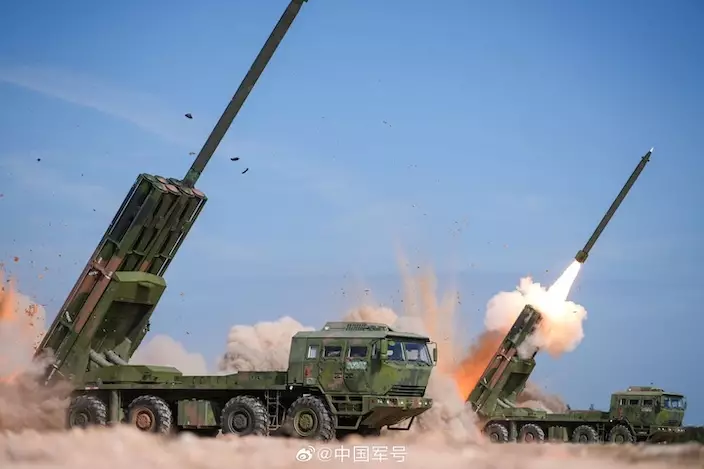
“Justice Mission-2025” rolls on as the Eastern Theater Command drills.
That debate doesn’t stay academic for long. It pumps up the island’s unease, with some people asking whether the same kind of military method could one day be copied and pasted into the Taiwan Strait. Even if it mostly lives in public talk, a high-tension political environment turns speculation into something that feels like risk.
People on the island don’t read the US move the same way. A small minority treats it as a US power flex, packed with intel integration, precision strike, and long-range reach. But the more clear-eyed view is harsher: such action chips away at the basic consensus of international order — because if major powers can raid at will and topple other countries’ leaders for their own aims, “rules” stop acting like rules.
Anxiety turns into politics
That worry quickly lands in Taiwan’s political arena. On Jan 5, multiple Taiwan legislators pressed Deputy Defense Minister Hsu Szu-chien at the legislature, asking how he views the US action against Venezuela and whether the PLA might replicate a similar model in the Taiwan Strait. Hsu doesn’t answer head-on. Rather, he merely mentioned preparing and drilling for all kinds of sudden contingencies.
Then he pivots to money. He urges the legislature to pass military budget appropriations quickly and plays up the urgency of delays eating into “preparation time.”
That kind of sidestep, unsurprisingly, only deepened public unease.
SCMP, citing multiple security experts, says the DPP authorities try to play down the association — but outsiders don’t fully rule it out. The reason, those experts argue, is the PLA’s continuing push to improve its ability to shift from exercises to real combat. On the island, that alone works like an anxiety amplifier.
Back in the real world, the PLA Eastern Theater Command has been running “Justice Mission-2025” exercises since Dec 29 last year. Official statements spell out the purpose: a stern warning to “Taiwan independence” separatist forces and external interference, and a move aimed at safeguarding national sovereignty and unification. The message is public and clear, there’s no gray area.
Some US think-tank voices pull a more confrontational takeaway from the US action. American Enterprise Institute senior fellow Hal Brands warns the US raid on Venezuela could create a “demonstration effect,” and he speculates China would watch those tactics closely. Some military commentators on the island seized the moment to hype fears, claiming the mainland might act during a “window” when US power is stretched thin.
That line of talk sounds like analysis, but it functions like a panic pump. US scholar Lev Nachman even says bluntly on social media that if a sudden military action hits the Taiwan Strait, the island could suffer “instant collapse” — not just militarily, but as a psychological shock to society.
KMT Chairperson Cheng Li-wun, in an interview, points to Donald Trump repeatedly stressing a shift of strategic focus toward affairs in the Americas. She says the Venezuela incident should be examined through the framework of international law, and she calls for disputes in any region to be resolved by peaceful means rather than force.
Cheng also reiterates the KMT position: uphold the “1992 Consensus,” oppose “Taiwan independence,” and urge Lai Ching-te to clearly oppose “Taiwan independence,” not touch legal red lines, and avoid continuously raising cross-strait conflict risks.
Rules talk meets reality
International reaction also turns critical of Washington’s approach. Multiple governments and regional organizations speak up quickly, condemning the action as a violation of the UN Charter, which explicitly prohibits using force to threaten or violate another nation’s territorial integrity and political independence. The telling part is the silence: the Western countries that often talk about “international rules” either zipped their mouths, or danced around the question this time.
Reuters says that even though China, Russia, and others clearly condemn the US behavior, the Trump administration is unlikely to face strong pressure from allies as a result. That selective muteness, by itself, drains the credibility of the international order.
On Jan. 5, Chinese Foreign Ministry spokesperson Lin Jian commented again, saying the US actions clearly violate international law and the basic norms of international relations, and violate the purposes and principles of the UN Charter. China calls on the US to ensure the personal safety of President Maduro and his wife, immediately release them, stop subverting the Venezuelan government, and resolve issues through dialogue and negotiation.




